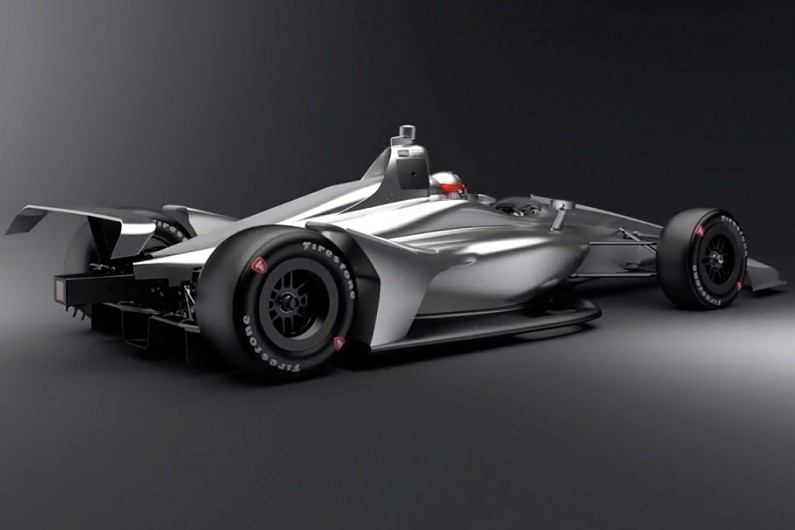The striking looks and early success of IndyCar’s new car has been a talking point of the 2018 season, and this week’s Motorsport Show explores how the design was developed.
IndyCar abandoned expensive, downforce-laden manufacturer aerokits after three years of costly development when Honda attempted to catch up to the leading Chevrolet designs.
Not only did the costs rise out of control, but the racing on track was damaged by cars that proved difficult to follow.
Just one year into the life of the manufacturer designs, IndyCar was already planning its new car and it then worked with series partner Dallara.
Chris Beatty, a UK-based designer, saw the chance to approach IndyCar and influence the looks of the 2018 car and he tells host Peter Windsor how his role evolved.
“I managed to get involved with Stefan Wilson after his brother’s accident at Pocono,” he said.
“The next day he had a meeting with IndyCar’s safety department and Jeff Horton, who is heading up IndyCar’s windscreen programme.
“Jeff got in touch with me and said ‘can we look at doing some concept work on the windscreen?’ So I worked with him to produce concepts that went off to PPG [producer of the windscreen’s materials] to really work out what could and could not be done.
“That project finished two years ago in terms of my involvement with it.
“I heard the 2018 project was coming up and asked Jeff if I could have the contact of the person heading it up and it was Tino Belli, the director of aerodynamics at IndyCar.
“I wrote to him ‘I want to get on this project, it’s perfect, and it’s something I can help with’. The response was ‘it’s an aero and engineering project’ and I thought ‘OK, I’ve given it a fair crack’.
“About a month later I got an email back that had the concept as it was at that time with Tino and Jeff really asking what I thought of it as a casual observer.”
Beatty continued to work with IndyCar on the new car’s development and believes that it’s change of direction has already proven successful on the track.
The designer points to statistics such as the following distance between cars halving this year due to the reduction in turbulence air.
He also added that the season-opening St Petersburg race had 110 passes between the top 10, with 11 of those becoming lead changes.
